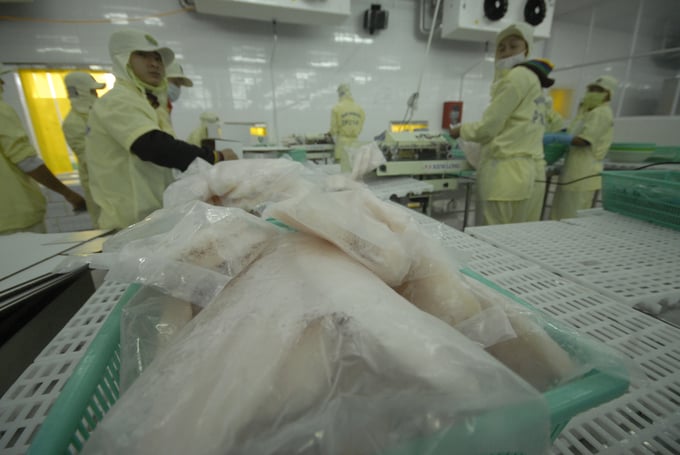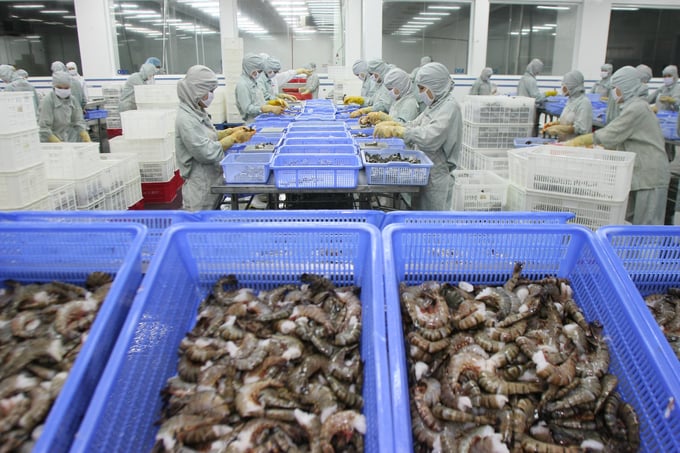November 25, 2025 | 19:03 GMT +7
November 25, 2025 | 19:03 GMT +7
Hotline: 0913.378.918
November 25, 2025 | 19:03 GMT +7
Hotline: 0913.378.918
In the official visit to the People's Republic of China and the participation of the World Economic Forum Annual Meeting of the New Champions 2023 in Tianjin (WEF Tianjin) at the end of June 2023, Prime Minister Pham Minh Chinh had a successful meeting with Premier Li Qiang of the State Council of China. The two leaders discussed and agreed upon many important contents.
Prime Minister Li Cuong believed that economic and trade cooperation between the two countries has a high degree of complementarity characteristics and great potential. China will further open the market for Vietnamese goods, especially high-quality agricultural and fisheries products as well as fruits from Vietnam.
China will coordinate to create favorable conditions for quarantine and customs clearance of goods, ready to cooperate in promoting the resolution of problems in institutions and policies so that the two countries' trade relations continue to grow sustainably and achieve better results.

The Ministry of Agriculture and Rural Development of Vietnam (MARD) proposed the General Department of Customs of China (GACC) soon complete the procedures for signing a protocol on requirements for food safety, quarantine and inspection of fisheries products. Photo: Hoang Vu.
Previously on June 8, the Ministry of Agriculture and Rural Development of Vietnam sent a note to the General Department of Customs of China proposing a number of solutions to promote agricultural trade and remove congestion. MARD proposed the GACC soon complete the procedures for signing the protocol between the two parties on food safety, quarantine and inspection for imported fisheries products that the two countries trade, allowing the export of live seafood through border gates in Yunnan province to reduce clearance pressure between border gates and thus create maximum favorable conditions for businesses.
On December 26, 2022, China announced the reopening of its borders and completely lifted isolation measures starting from January 8, 2023. This decision was China's final step in canceling the "Zero Covid" policy that the country has applied for the past three years.
The reopening of the billion-people market along with the efforts of the Government, the Prime Minister, relevant ministries, departments and agencies will have a positive impact on Vietnam's fisheries exports.
According to Nguyen Duy Kien, Asia-Africa Market Department, Ministry of Industry and Trade), China is one of the countries with the largest consumption of fisheries products in the world. The booming fisheries market in China presents huge opportunities for international exporters. The growing consumer demand of the Chinese people along with the shortage of domestic supply has caused China's fisheries imports to increase every year.
China's fisheries consumption is estimated at 39 - 40 kg/person (approximately 60 million tons in total). Considering the current consumption rate, it is predicted that by 2030 this country's fisheries consumption will be at approximately 65 million tons.

The booming fisheries market in China presents great opportunities for international exporters, including Vietnam. Photo: Huy Hung.
“As a densely populated country with more than 1.4 billion people, people's living standards are improving, so China's demand for food and particularly fisheries products is also increasing. China is expected to consume 36% of total global food output by 2028, with per capita consumption reaching 44.3 kg, an increase compared to the current 39.3 kg, in the context that domestic fishery production is limited because of environmental factors and the supply is not enough to meet the demand,” said Truong Dinh Hoe, General Secretary of the Vietnam Association of Seafood Exporters and Producers (VASEP).
According to Nguyen Van Dao, General Director of Go Dang Joint Stock Company (Hau Giang), exporting to China is quite convenient. This is a close market, so the transportation costs are low. The paperwork is also less complicated than in Europe markets, but this market is also very strict when it comes to quality control.
Vietnam's fisheries export turnover to China in 2022 reached USD 1.57 billion, an increase of 32% in output and 61% in value compared to 2021. Pangasius products came up with significant growth and soon became a strong export item. Fisheries products of Vietnam now have a high rate of official export to China. This is considered a methodical form of international trade, both in terms of the level of logistics services.
"Currently, sea freight services using containers to transport goods from Vietnamese ports to China are quite diverse and competitive. There are more than 20 container shipping lines exploiting direct services from Hai Phong, Da Nang, and Ho Chi Minh City. In terms of air transport, Vietnamese and international airlines are currently exploiting daily and weekly flights from Ho Chi Minh and Hanoi to major Chinese airports with a fair amount of load. The railway is also being utilized," said Le Duy Hiep, Chairman of the Vietnam Logistics Business Association (VLA).
In the context of rising global inflation, China is still the most potential destination for Vietnamese fisheries businesses in 2023 and 2024 thanks to explosive demands, close geographical location, and low logistics costs. However, when exporting to this market, businesses need to carefully study the market and partners to avoid risks.
Translated by Samuel Pham
/2025/11/24/3536-2-112800_176.jpg)
(VAN) Dong Nai now has tens of thousands of hectares of forests certified for sustainable management, and this area will continue to be expanded in the coming period.

(VAN) Vinh Ha hamlet (Dai Xuyen commune, Hanoi) is shifting away from small-scale farming as households adopt bioscurity into their breeder chicken models.

(VAN) Heavy rains make aquatic species more vulnerable to disease. Proactive water management and high-tech systems help farmers prevent outbreaks and protect yields.

(VAN) Greenhouses are shifting production mindsets in Binh Lu commune, enabling farmers to ‘weather the sun and rain’ and secure stable vegetable harvests throughout the year.

(VAN) Green transition is crucial for the Mekong Delta amid climate change and stricter standards, offering a path toward sustainability.

(VAN) Dong Thap promotes agricultural restructuring, forms large specialized farming zones, raises the value of agricultural products and develops toward ecological and high-tech directions.
/2025/11/22/4018-4-213342_747.jpg)
(VAN) The Mekong Delta Agricultural Experts Club has attracted 143 experts and researchers to participate in providing consultancy and contributing initiatives to the development of one million hectares of high-quality rice.